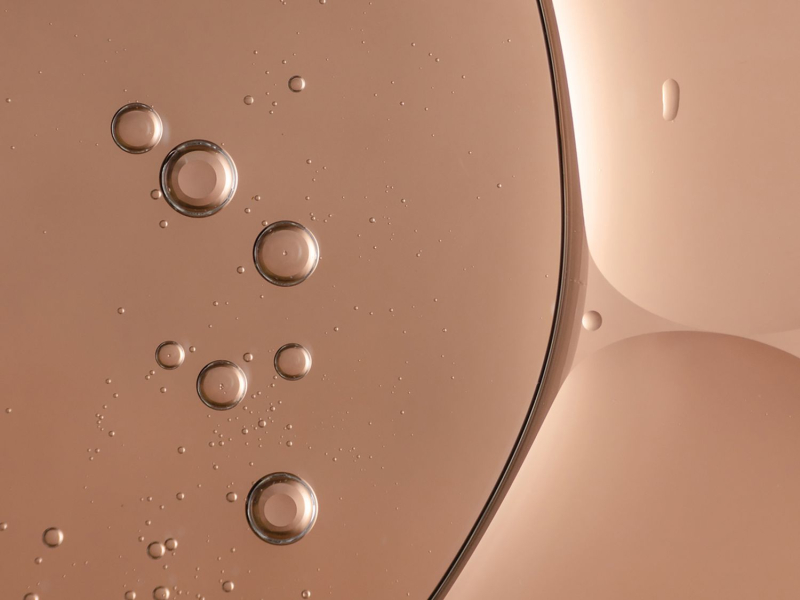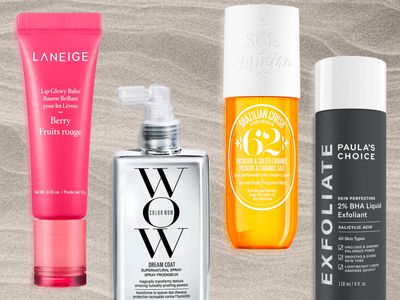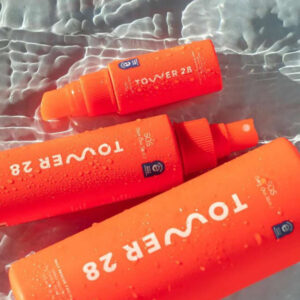
In Products Who Should Use Them The Final Takeaway
One of the most buzzed-about skincare discoveries of late is exosomes. These tiny communicators are said to do everything from boosting in-office procedures to reducing inflammation and even growing hair. The naturally occurring vesicles were once glossed over, but since stem cells have become a hot topic, their far less controversial cousin—exosomes—have stolen the spotlight.
We tapped three experts, physicians Charlene DeHaven, MD, Marisa Garshick, MD, and Yannis Alexandrides, MD, FACS, for the low down on exosomes, including how they work, their benefits, and why you might want to consider adding them to your routine. Consider this your guide on all things exosomes.
What Are Exosomes?
Exosomes are microscopic extracellular vesicles produced within the body and secreted by skin cells. They can be used in conjunction with in-office skin treatments or as part of a topical skincare regimen. “[Exosomes] communicate with skin cells to improve cell regeneration and signal certain functions, like producing more collagen and wound healing, to take place,” Alexandrides explains. Because exosomes contain various proteins, RNA, growth factors, and signals from activated stem cells, Garshick says they can help elicit responses in target cells and aid cell communication.
"The therapeutic potential of exosomes relates primarily to their anti-inflammatory qualities, which is one of the key mechanisms—perhaps the key mechanism—through which stem cell therapy works," DeHaven says. "Furthermore, stem cells are impossible to get into the skin without an incision or injection, whereas exosomes contain smaller molecules that are potentially deliverable."
So why the sudden interest? DeHaven says the skincare industry is riding the coattails of medical science, and discoveries in stem cell research have caught the public's attention. "When stem cells became a hot topic, exosomes were discussed as a mechanism through which stem cells could work, so they caught on," she explains. "However, even in medicine, the research is still in the early stages and even earlier in the skincare realm."
Benefits
In synthetic form, exosomes are derived from platelets and mesenchymal stem cells, which have numerous skin benefits, including waking up skin cells, reducing inflammation, and repairing and rejuvenating old, tired skin cells. Alexandrides adds that exosomes are also known to increase angiogenesis (the creation of blood vessels in the skin) and improve the function of fibroblasts and keratinocytes, the primary cells found in the skin.
Garshick says using exosomes cosmetically may assist with skin cell regeneration and repair by helping to transfer contents and signals. “They can also help with certain medical skin conditions, such as atopic dermatitis, by reducing inflammation,” she says. DeHaven says these anti-inflammatory potentials are behind exosomes’ popularity. “Inflammatory processes drive aging processes,” she explains. “Aging is a pro-inflammatory process, as are wrinkles, sunburn, skin conditions such as acne and rosacea, and in-office treatments.” That’s one reason your dermatologist may layer on exosomes after a laser or microneedling; it will help boost the treatment’s effects while speeding up the recovery period to improve wound healing, leading to brighter, smoother, softer, firmer skin. You can see changes in the skin as soon as six weeks after an exosome treatment.
How They're Used in Treatments
Exosomes are among the most rejuvenating add-on substances used in professionally administered skincare treatments. “They improve collagen and elastin production to help greatly with aging skin, wound healing, pigmentation, redness, damaged or compromised skin, and large pores,” Alexandrides says. “Using exosomes can also improve the results of a treatment depending on how they are incorporated.”
Integrating exosomes into treatments like microneedling and resurfacing lasers, which create micro-injuries allowing the exosomes to penetrate the skin appropriately, helps reduce the inflammation created within the skin while locking in the benefits. For example, Alexandrides likes to pair ASCE+ and SRLV exosomes with microneedling to improve the penetration of the product deeper into the skin. “In-office exosomes are typically combined with other ingredients and treatments such as hyaluronic acid, peptides, amino acids, vitamins, and minerals,” he tells us. Adding an exosome therapy onto a laser or microneedling can add an extra $300 to the treatment.
After the treatment, your dermatologist will topically apply the exosomes—usually in gel or serum form—helping to reduce redness and the sensation of hotness, discomfort, or stinging on the skin. DeHaven says there is enough inflammation in the skin for healing but not excess that would accelerate aging, cause scarring, or other complications.
According to Garshick, some preclinical studies have shown that exosomes may help promote wound healing and skin rejuvenation, which is why dermatologists use them to minimize downtime and enhance results. "Additionally, exosomes may be injected to help with hair health and growth, and some studies have shown them to help promote hair follicle growth potentially," she adds. "However, the clinical studies are limited, so more research is needed to determine the benefits fully."
Expect new ways of using exosomes to become more mainstream as research proves new uses. For example, Alexandrides combines exosome treatments with facial procedures such as facelifts, which he believes leads to even better results and a quicker recovery.
How They're Used in Skincare Products
Exosomes have found their way into skincare products, but DeHaven says the benefits are questionable. That’s because exosomes are so small they may have limited benefits due to penetration, Garshick posits. “But they may help stimulate collagen production, similar to peptides, by signaling the skin to perform certain functions,” she adds. Her favorite skincare product with exosomes is the Intense Serum by Plated Skin Science ($259), which helps with fine lines, wrinkles, redness, and brown spots. “It uses platelets derived from FDA-approved platelet banks and helps support soft tissue rejuvenation,” she says. “I like that it is a lightweight formulation that all skin types can use, and you can apply it alongside other skincare products.”
Other exosome products include the Cell Forté Serum by Angela Caglia ($395), which is formulated with a human mesenchymal stem cell conditioned media plus growth factors, fatty acids, and peptides; SŌM Skin’s Rejuvenate & Fill Microneedle Patches ($280), which are designed with microneedles to enhance the absorption capability of the actives to help smooth the skin and improve discoloration and redness; and Elevai’s enfinity Daily Exosome Serum ($299), which also contains vitamin C, copper peptides, and hyaluronic acid.
If you're considering adding exosomes to your skincare routine, you'll see the best results when using them at night and after a professional treatment to help maintain the results. Alexandrides recommends being vigilant about the quality of the product (since some are unstable) and storing them at the right temperature to keep them from expiring. "The origin of the exosomes and the technique used to isolate them is significant to ensure they deliver on their promise," he adds.
Who Should Use Them
Exosomes benefit all skin tones and types looking to address the common signs of aging. Alexandrides believes exosomes have many advantages but finds that those who gain the most from them have sagging skin, a lack of elasticity, or dull skin. Adding exosomes into your current skincare routine will likely show more of a result when the body's natural production of exosomes begins to decline, which is usually in the 30s.
The Final Takeaway
Exosomes may be the next frontier in rejuvenating skincare, but all our experts agree that more studies are needed to understand their benefits and uses. "We are still in the early stages of exosome discovery, and it is important to be cautious when considering this type of therapy," says Garshick. "While some use it as an injection, companies are beginning to advertise products containing exosomes, which may be bovine-derived or from pre-screened donor stem cells grown in a lab setting." Exosome therapy has no standard regulation or protocol, so always be careful when introducing it into your routine.
See More from Byrdie Shopping

8 Viral Beauty Products to Shop at Amazon This Memorial Day, Starting at Just $5

Kendall Jenner’s Glowy Tinted Moisturizer Is Just $14 on Amazon Right Now

Why You Should Apply Deodorant at Night


